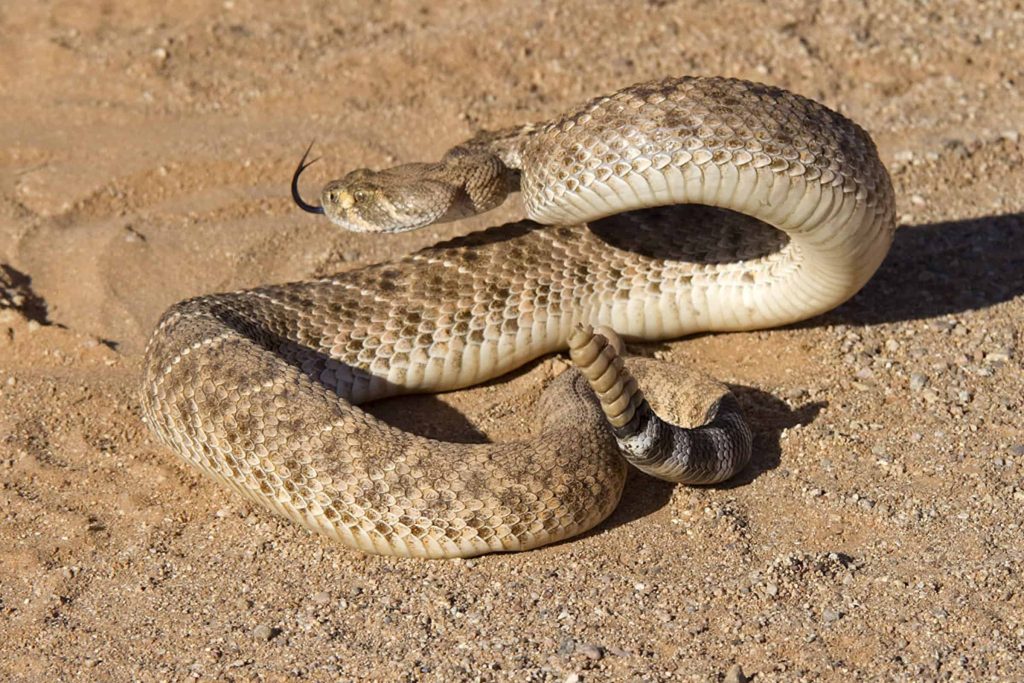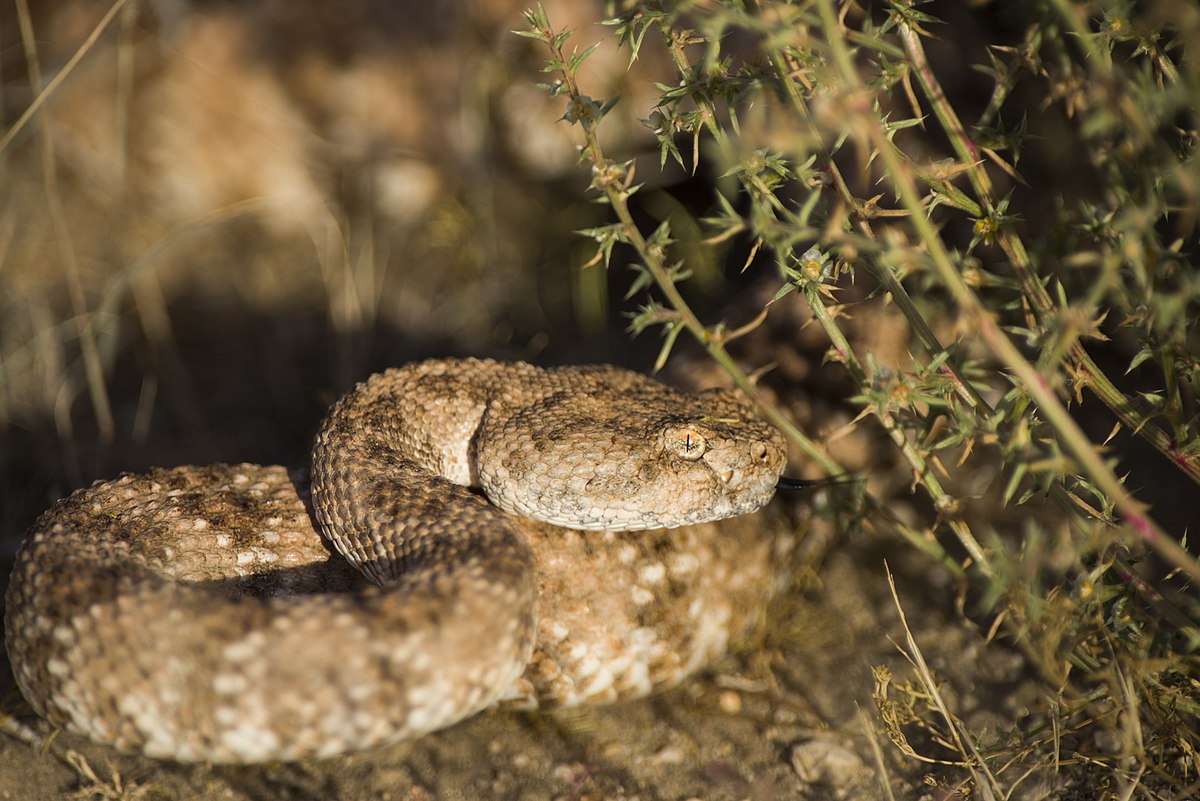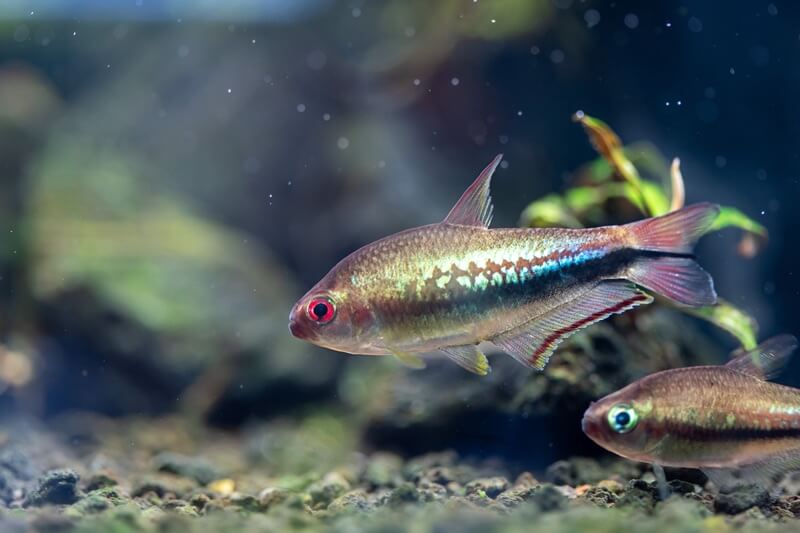Nevada is home to six different types of rattlesnakes, all of which are members of the Viperidae family, the pit vipers. These venomous snakes may be dangerous, but they also play a vital role in the ecosystem here. Usually, rattlesnakes do their best to avoid humans, and will only strike if they feel threatened.
Rattlesnakes are often out and about during the spring and fall since it’s not too hot or too cold. When it gets hotter, they will find a shady place to rest.
You are reading: Discover 6 Types Of Rattlesnakes In Nevada
When it’s too cold to be out, they go into brumation. In this article, we will discover the six types of rattlesnakes found in Nevada.

6 Types Of Rattlesnakes In Nevada
Western Rattlesnake

The Western Rattlesnake is one of the six types of rattlesnakes found in Nevada. It is the only venomous reptile in most of the Great Basin Desert. These snakes are best identified by their blunt, rattle-tipped tail and thick, stocky bodies.
Adult Great Basin rattlesnakes average 30-36 inches in length, and are tan to yellow in color, with a series of darker oval blotches on their back.
Great Basin rattlesnakes may occur up to 11,000 feet in elevation, but are more common below 8,000 feet, in a variety of habitats such as greasewood/shadscale, sagebrush, pinyon/juniper, and fir/spruce.
These snakes hibernate in dens, southern exposed rock outcrops, during the winter, emerging in May to bask in the spring sun. Gravid (pregnant) females remain near the den, basking frequently to facilitate proper development of their developing embryos.
Read more : Discover The Top 4 Largest And Most Dangerous Snakes In Hawaii This Summer
In mid to late September, they give birth to 5-8 live baby rattlesnakes, remaining with them for the first 7-10 days of their life.
Western Diamond-backed Rattlesnake
The Western Diamondback Rattlesnake, also known as the Texas Diamond-back, is a venomous rattlesnake species found in the southwestern United States and Mexico. It is the most common rattlesnake species found in homes and in direct conflict with human development in the American Southwest, particularly in the rapidly expanding metro areas of Phoenix and Tucson.
These snakes are heavy-bodied with a triangular-shaped head and two dark diagonal lines on each side of their face. They are pit vipers, which means they have a heat-sensing pit located behind each nostril that can detect differences in temperature, sometimes differences that are only a fraction of a degree apart.
Western Diamondbacks can exceed seven feet in length and occupy diverse habitats from sea level to 7,000 feet, ranging from desert flats to rocky hillsides, grassy plains, forested areas, river bottoms, and coastal prairies.
These snakes use venom to immobilize their prey, which includes birds, reptiles, and small mammals. The venom is mainly hemotoxic and attacks the victim’s blood system. The Western Diamondback Rattlesnake is not threatened or endangered.
Mojave Rattlesnake
The Mojave Rattlesnake, also known as the Mojave Green Rattlesnake, is a highly venomous pit viper species found in North America. These snakes are native to the deserts of the southwestern United States and adjacent central Mexico. They are perhaps best known for their potent neurotoxic-hemotoxic venom, which is considered the world’s most potent rattlesnake venom.
The Mojave Rattlesnake is commonly found in Riverside, California, and is found in the southwestern United States in southern California, southern Nevada, northern and eastern Nevada, extreme southwestern Utah, most of Arizona, southern New Mexico, and some of Texas. These snakes live in deserts and other areas with xeric vegetation.
The Mojave Rattlesnake is primarily nocturnal and is more inactive during the hottest parts of the day. They are venomous and considered dangerous, although if left alone and not disturbed, they are likely to make their way away from humans.
These snakes are ambush predators and will consume small mammals, lizards, other snakes, and sometimes things as big as a rabbit. The Mojave Rattlesnake’s venom can be either hemotoxic (toxins that attack the blood) or neurotoxic (toxins that target the nervous system), making treatment challenging.
Speckled Rattlesnake

The Speckled Rattlesnake, also known as Mitchell’s Rattlesnake or White Rattlesnake, is a venomous pit viper species in the family Viperidae. Here are some facts about the Speckled Rattlesnake:
– The species is endemic to the Southwestern United States and adjacent northern Mexico.
– Most adult Speckled Rattlesnakes measure 24 to 30 inches in length, but some “giants” measuring almost 36 inches have been found.
– The Speckled Rattlesnake varies in color, often matching the earth tones of the rocks and soil it inhabits. Some occur in beautiful shades of orange or pink. Black speckles form indistinct cross bars or dorsal blotches across the back. Some desert specimens are colored like decomposed granite. Dark rings encircle the tail.
– The species has three subspecies: the San Lucan Speckled Rattlesnake (C. m. mitchelli); the Panamint Speckled Rattlesnake (C. m. stephensi); and the Southwestern Speckled Rattlesnake (C. v. pyrrhus).
– The Speckled Rattlesnake ranges from southern Nevada to the Cape region of Baja California Sur, and east to central Arizona and extreme northern Sonora, Mexico. This distribution mirrors the combined Mojave and Sonoran Deserts.
– Like many other snakes, this species tends to be diurnal in cool weather, and nocturnal during hot weather.
– The Speckled Rattlesnake is an ambush predator that preys on small animals such as rodents, squirrels, rats, mice, birds, and lizards.
– The venom of the Speckled Rattlesnake, injected through needle-sharp front fangs, is hemotoxic, attacking its prey’s tissue and red blood cells.
– Human encounters with Speckled Rattlesnakes are uncommon, and these snakes will escape humans and other threats if they can detect them through thermal detection and vibration awareness.
Great Basin Rattlesnake
The Great Basin Rattlesnake is a venomous pit viper species found in the Great Basin region of the United States. Here are some facts about the Great Basin Rattlesnake:
Description:
– The Great Basin Rattlesnake is light brown or gray with a tapering row of brownish blotches down the midline of the back. Scales are large and keeled, giving the skin a rough texture.
– Adult Great Basin Rattlesnakes average 30-36 inches in length, and are tan to yellow in color, with a series of darker oval blotches on their back.
– Great Basin rattlesnakes may occur up to 11,000 feet in elevation, but are more common below 8,000 feet, in a variety of habitats- greasewood/shadscale, sagebrush, pinyon/juniper, & fir/spruce.
Habitat & Range:
– These snakes are found throughout all of Northern Nevada, and into parts of Southern Nevada. They are found in a variety of habitats including grassy, shrubby, and rocky areas.
– The Great Basin Rattlesnake ranges from southern Nevada to the Cape region of Baja California Sur, and east to central Arizona and extreme northern Sonora, Mexico. This distribution mirrors the combined Mojave and Sonoran Deserts.
Behavior & Diet:
– The Great Basin Rattlesnake is an ambush predator that preys on small animals such as rodents, squirrels, rats, mice, birds, and lizards.
– Like other rattlesnakes, the Great Basin Rattlesnake gives birth to live young. They will have between 4 and 12 in their litter. Once the snakes are born they will not receive any parental care.
– Great Basin rattlesnakes hibernate in dens, southern exposed rock outcrops, during the winter, emerging in May to bask in the spring sun.
Conservation Status:
– The Great Basin Rattlesnake is unprotected in Nevada and is considered a species of “Least Concern” by the International Union for Conservation of Nature (IUCN).
Northern Black-tail Rattlesnake
The Northern Black-tailed Rattlesnake, also known as the Green Rattler, is a venomous pit viper species found in the southwestern United States and Mexico. Here are some facts about the Northern Black-tailed Rattlesnake:
Description:
– The Northern Black-tailed Rattlesnake is a medium-sized rattlesnake ranging from 30 to 42 inches long; most individuals measure less than 39 inches. It has a big triangular head attached to a thin neck and, like other rattlesnakes, is heavy-bodied with a keratin rattle at the end.
– These snakes range in color from yellows and olive greens to browns and black. One of their most distinguishing features is, despite variations in body color, entirely black tail scales. Often, these rattlesnakes have a black band across their eyes extending diagonally down to the corners of their mouth, forming a sort of facial ‘mask’.
Habitat & Range:
– The Northern Black-tailed Rattlesnake ranges from Texas to Arizona and south into the Mexican states of Sonora, Chihuahua, and Coahuila. It can be found in grasslands, deserts, rocky areas, and high-pine or boreal forests.
– These snakes can occupy a diverse range of habitat and elevation. They can be found at up to 12,000 feet elevation.
Behavior & Diet:
– The Northern Black-tailed Rattlesnake is primarily terrestrial and inhabits grasslands, savannahs, desert areas, rocky and mountainous areas, as well as high-altitude forested habitats.
– These snakes are generally solitary creatures. Their behavior varies over the course of a year. In the spring and fall, they are primarily diurnal. In the summer, they shift to a nocturnal behavior to avoid the heat of summer. In the winter, Northern Black-tailed Rattlesnakes hibernate in dens created and abandoned by other animals, often with other species of snakes.
– The diet of the Northern Black-tailed Rattlesnake is primarily mammalian, including woodrats, squirrels, and rabbits. However, individuals have also been reported to opportunistically take a wide variety of prey, including other snakes and Gila lizards.
Conservation Status:
– The Northern Black-tailed Rattlesnake is considered a species of “Least Concern” by the International Union for Conservation of Nature (IUCN).
FAQS
1. Are all rattlesnakes venomous?
Yes, all rattlesnakes are venomous. However, not all venomous snakes are rattlesnakes.
2. How can I identify a rattlesnake?
Rattlesnakes can be identified by their broad, triangular head with venom glands, and a rattle at the end of their tail. They also have a heat-sensing pit located behind each nostril that can detect differences in temperature.
3. Are rattlesnakes dangerous?
Yes, rattlesnakes are venomous and can be dangerous if provoked or threatened. However, they usually try to avoid humans and will only strike if they feel threatened.
4. What should I do if I encounter a rattlesnake?
If you encounter a rattlesnake, it is best to leave it alone and give it plenty of space. Do not try to handle or kill the snake, as this can be dangerous. If you are in an area where rattlesnakes are common, it is a good idea to wear sturdy boots and watch where you step.
5. What should I do if I am bitten by a rattlesnake?
If you are bitten by a rattlesnake, seek medical attention immediately. Do not try to suck out the venom or use a tourniquet, as these methods can be dangerous and ineffective.
6. How can I prevent rattlesnakes from coming onto my property?
To prevent rattlesnakes from coming onto your property, keep your landscaping maintained and free from excessive weed and brush overcrowding. Ensure wood and rock piles are placed as far away from the path and entryways to your home as possible.
Source: https://petstutorial.com
Category: Animals










